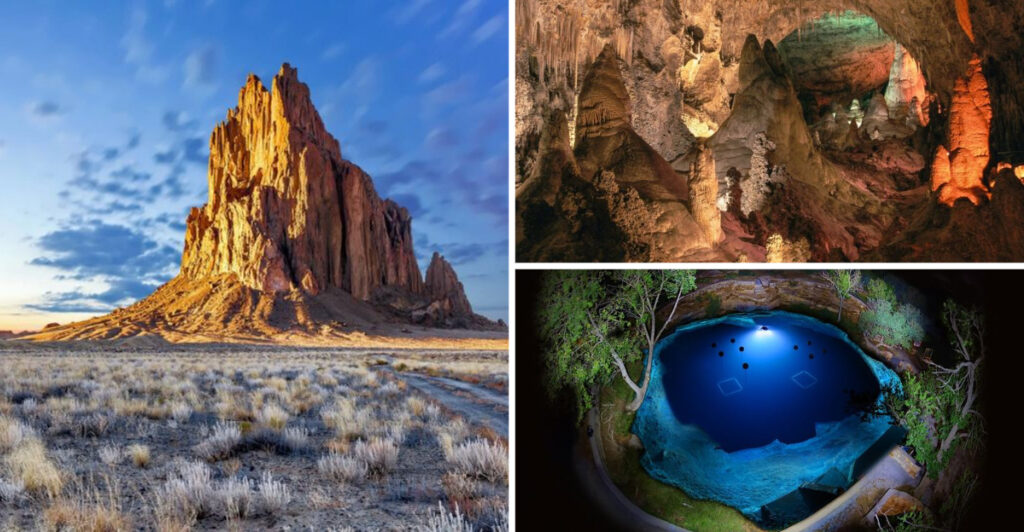New Mexico, often referred to as the Land of Enchantment, is home to some of the most surreal landscapes and stunning vistas in the United States. This southwestern state offers a diverse range of otherworldly experiences, from ancient geological formations to vibrant cultural landmarks. Whether you’re an adventurer, a photographer, or someone seeking a unique travel experience, New Mexico has something for everyone. Here are 19 breathtaking places that will make you feel as if you’ve stepped into another world.
White Sands National Park
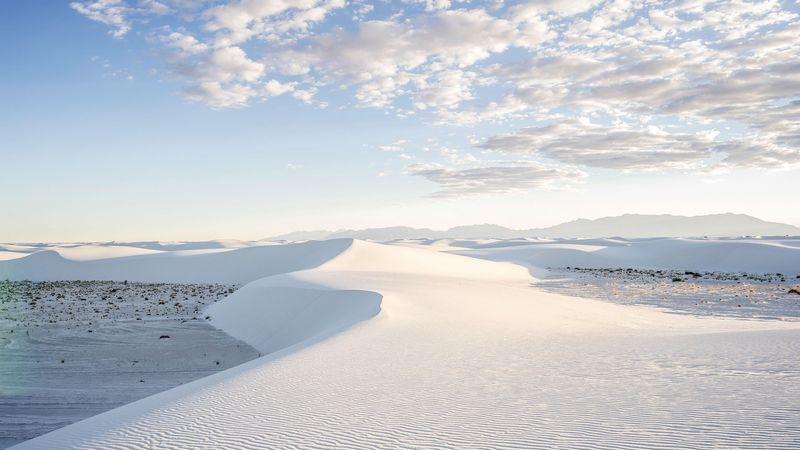
Picture a sea of white dunes, stretching as far as the eye can see. White Sands National Park is a mesmerizing oasis of gypsum sand in southern New Mexico. Here, brilliant white sands contrast with the azure sky, creating a visual spectacle. Walking barefoot on these cool sands is an experience like no other.
The park’s unique ecosystem supports various wildlife species, adding to its allure. Visitors often enjoy hiking, sledding, and picnicking on the dunes. The setting sun paints the sands in hues of pink and gold, offering an unforgettable sight.
“Did you know? Gypsum rarely forms sand because it dissolves in water, making this landscape even more unique.”
Carlsbad Caverns National Park
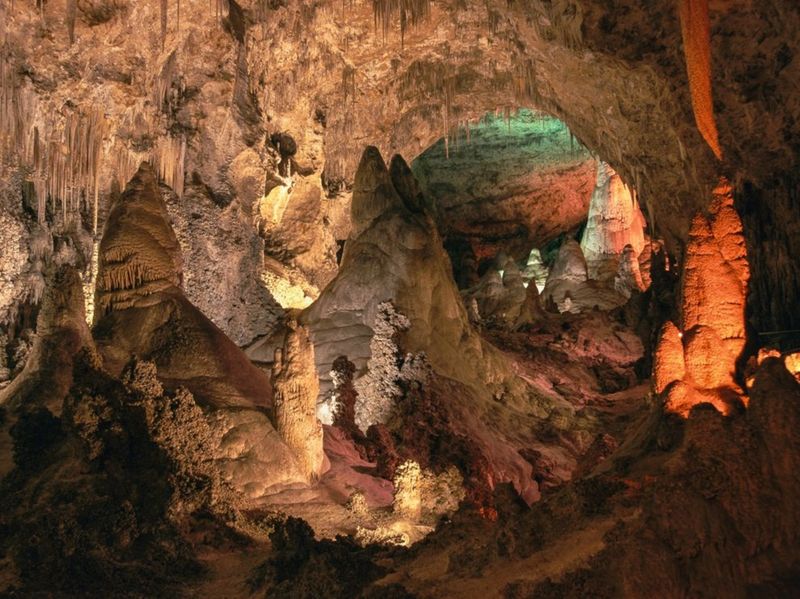
Deep beneath the Guadalupe Mountains lies a subterranean wonder. Carlsbad Caverns National Park invites you to explore its extensive network of limestone caves. This underground marvel is known for its vast chambers and intricate formations.
Imagine walking through the Big Room, one of the largest underground chambers in North America, adorned with stalactites and stalagmites. The park offers guided tours, allowing visitors to learn about the geology and history of these formations. The Bat Flight program, where thousands of bats exit the cave at dusk, is a sight to behold.
“Did you know? The caverns were formed over 250 million years ago due to the work of sulfuric acid.”
Bisti/De-Na-Zin Wilderness
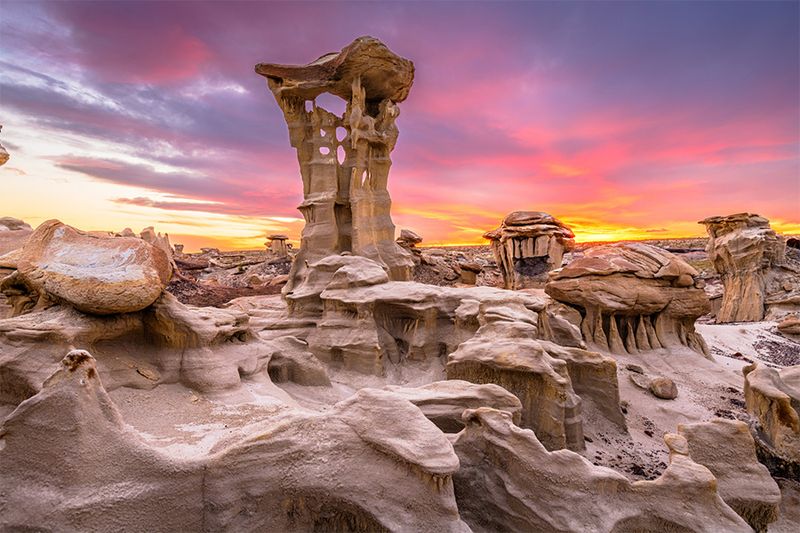
In the remote desert of northwest New Mexico lies the Bisti/De-Na-Zin Wilderness, a land filled with bizarre rock formations and colorful badlands. The area is a treasure trove for photographers and adventure seekers alike.
Navigate through a landscape that looks more like a scene from Mars than Earth. Hoodoos, natural arches, and balanced rocks create a surreal atmosphere. The vibrant colors of the rocks change with the shifting light, offering endless photographic opportunities.
“Fun fact: Bisti means ‘a large area of shale hills’ in Navajo, highlighting the region’s geological diversity.”
Taos Pueblo
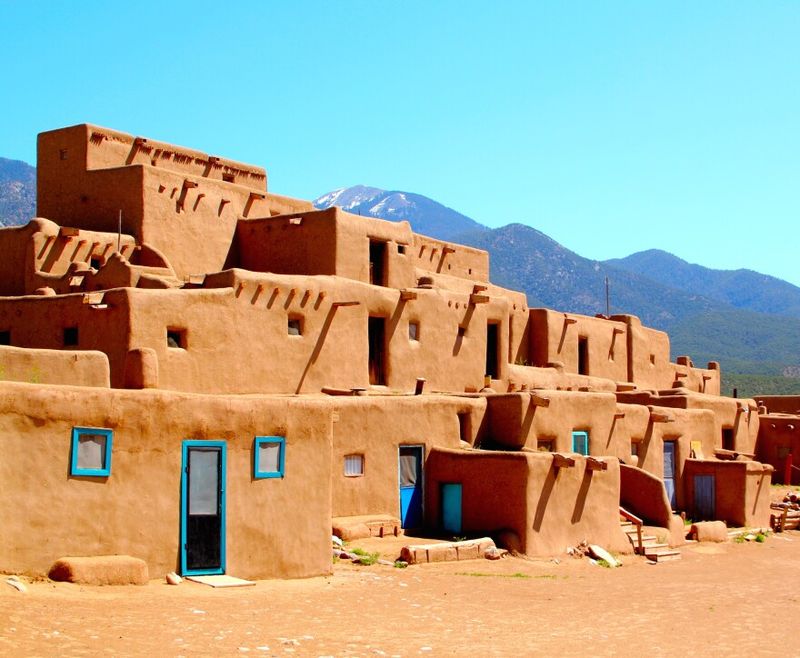
Step back in time at Taos Pueblo, a living Native American community that has been continuously inhabited for over 1,000 years. This UNESCO World Heritage Site is renowned for its multi-storied adobe buildings set against the stunning backdrop of the Sangre de Cristo Mountains.
Visitors are welcomed to explore this historic site and learn about the traditions and culture of the Taos people. The Pueblo’s timeless architecture and spiritual significance offer a glimpse into a rich heritage that continues to thrive today.
“Did you know? Taos Pueblo is one of the oldest continuously inhabited communities in North America.”
Shiprock
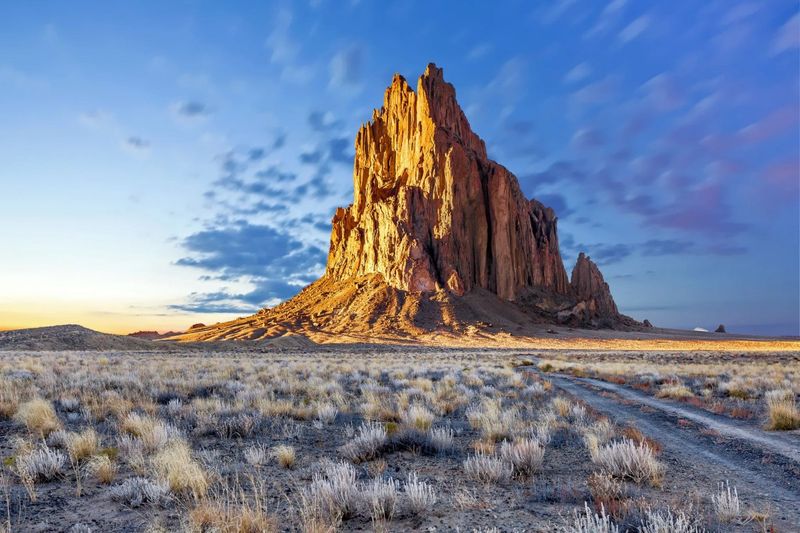
Rising sharply from the desert floor, Shiprock is an imposing volcanic rock formation named for its resemblance to a 19th-century clipper ship. This sacred site for the Navajo Nation offers an extraordinary view against the vast desert backdrop.
The rock formation is not only a geologic marvel but also holds cultural and spiritual significance for the Navajo people. Though climbing is prohibited, the surrounding landscape provides ample opportunities for photography and exploration.
“Fun fact: Shiprock was formed around 30 million years ago and is the eroded remains of a volcanic plume.”
Bandelier National Monument
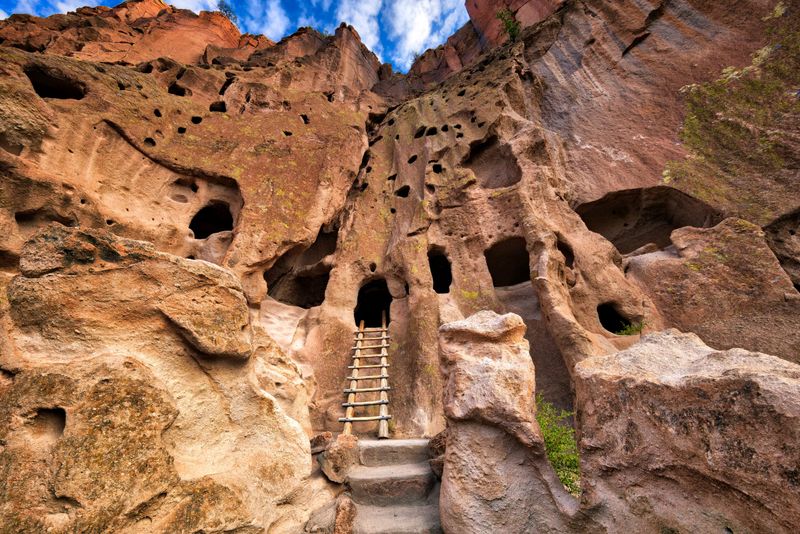
Amidst the rugged terrain of the Pajarito Plateau, Bandelier National Monument showcases the ancient dwellings of the Ancestral Puebloans. Carved into the canyon walls, these cliff homes tell stories of a people who lived here over 800 years ago.
Explore the well-preserved ruins, kivas, and petroglyphs that offer insight into the daily lives and spiritual practices of the ancient inhabitants. The Frijoles Canyon trails provide a scenic hike through the monument’s unique landscape.
“Did you know? The monument is named after Adolph Bandelier, a Swiss-American anthropologist who studied the area in the 19th century.”
Kasha-Katuwe Tent Rocks National Monument
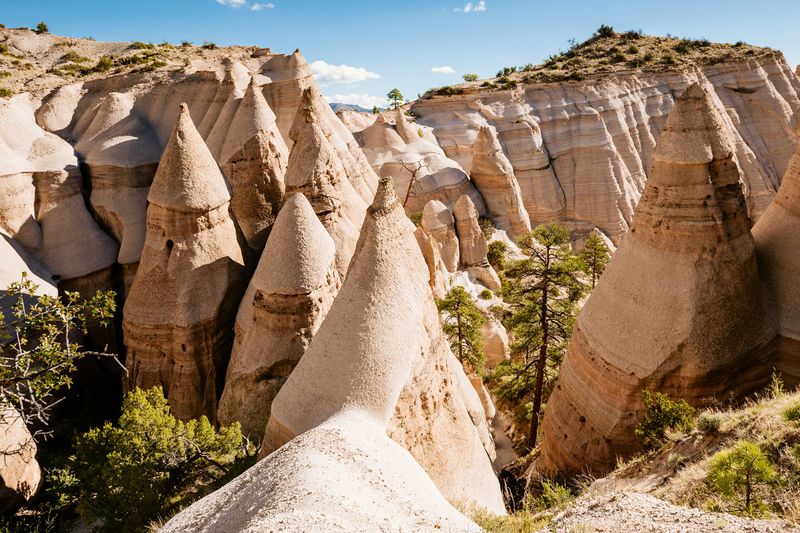
A geologic wonderland awaits at Kasha-Katuwe Tent Rocks National Monument. Located between Albuquerque and Santa Fe, this area is famed for its cone-shaped rock formations, created by volcanic eruptions millions of years ago.
Hike through narrow canyons and marvel at the tent rocks’ unique shapes and textures. The trails lead to a viewpoint offering panoramic views of the surrounding landscape, showcasing the stark beauty of this natural wonder.
“Fun fact: The name ‘Kasha-Katuwe’ means ‘white cliffs’ in the Keresan language, reflecting the striking appearance of the rock formations.”
Roswell

Famous for the 1947 UFO incident, Roswell has become synonymous with alien lore and mystery. Visitors to this quirky town can explore the UFO Museum and Research Center, which delves into the history and conspiracy theories surrounding the event.
Walking through Roswell feels like stepping into a different world, where extraterrestrials are part of the town’s identity. Aside from UFO-centric attractions, Roswell offers art galleries, shopping, and local cuisine.
“Did you know? The Roswell incident inspired countless books, movies, and TV shows, cementing its place in pop culture history.”
Chaco Culture National Historical Park
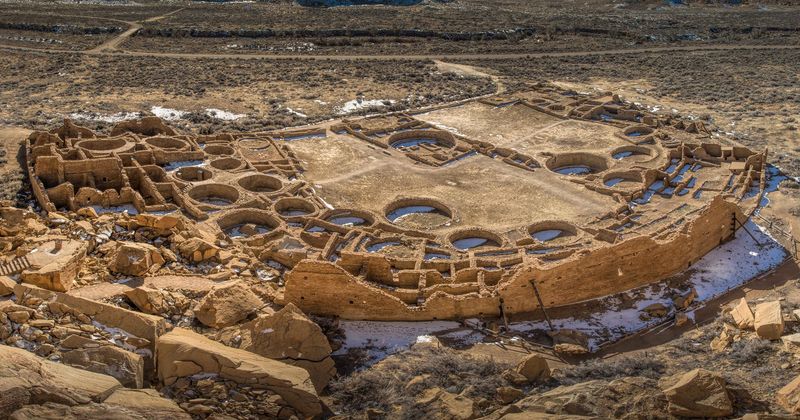
A hub of ancient civilization, Chaco Culture National Historical Park boasts impressive ruins of the Ancestral Puebloans. These architectural marvels, situated in the high desert, reveal a sophisticated society that thrived over a thousand years ago.
Visitors can wander through the extensive network of roads and settlements, gaining insight into the Chacoan culture’s social and ceremonial life. The park is also renowned for its dark skies, providing stargazing opportunities.
“Fun fact: The Chacoan people were master astronomers, aligning many structures with celestial events.”
Gila Cliff Dwellings National Monument
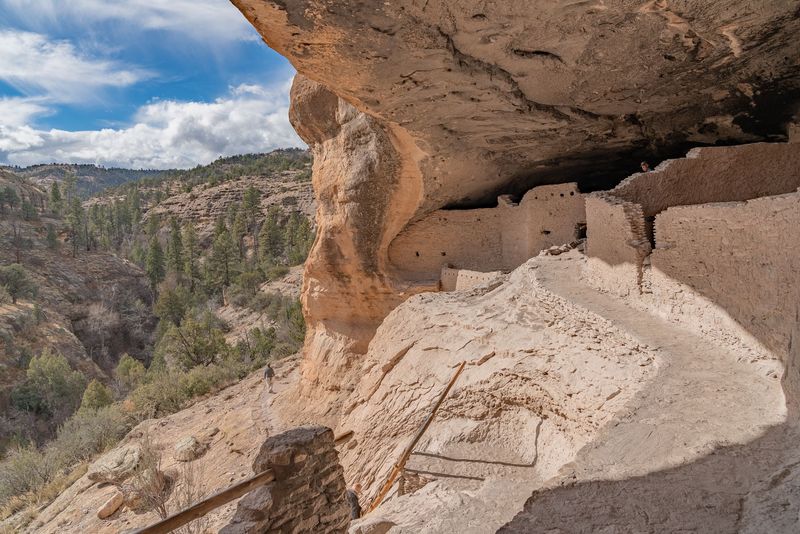
Hidden within the Gila Wilderness, the Gila Cliff Dwellings offer a glimpse into the lives of the Mogollon people. These ancient homes, nestled in cliff alcoves, were inhabited over 700 years ago.
Visitors can explore the well-preserved dwellings and imagine the challenges and triumphs of living in such a unique environment. The surrounding wilderness is perfect for hiking and wildlife watching, adding to the site’s allure.
“Did you know? The Gila Wilderness was the first designated wilderness area in the United States, reflecting its pristine and untouched beauty.”
Rio Grande Gorge Bridge
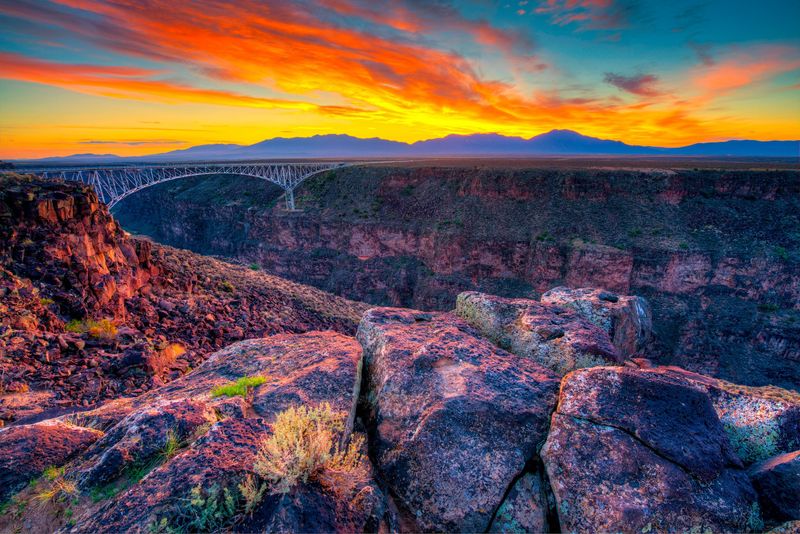
Spanning the Rio Grande Gorge, this dramatic bridge offers breathtaking views of the canyon and river below. Located near Taos, the bridge is one of the highest in the U.S., attracting visitors with its striking architecture and natural beauty.
Walking across the bridge provides an exhilarating experience, with panoramic vistas of the rugged landscape. The area is also popular for hiking and photography, capturing the stunning contrast between the steel structure and the surrounding environment.
“Fun fact: The bridge stands roughly 565 feet above the Rio Grande, making it the fifth highest bridge in the United States.”
Valles Caldera National Preserve
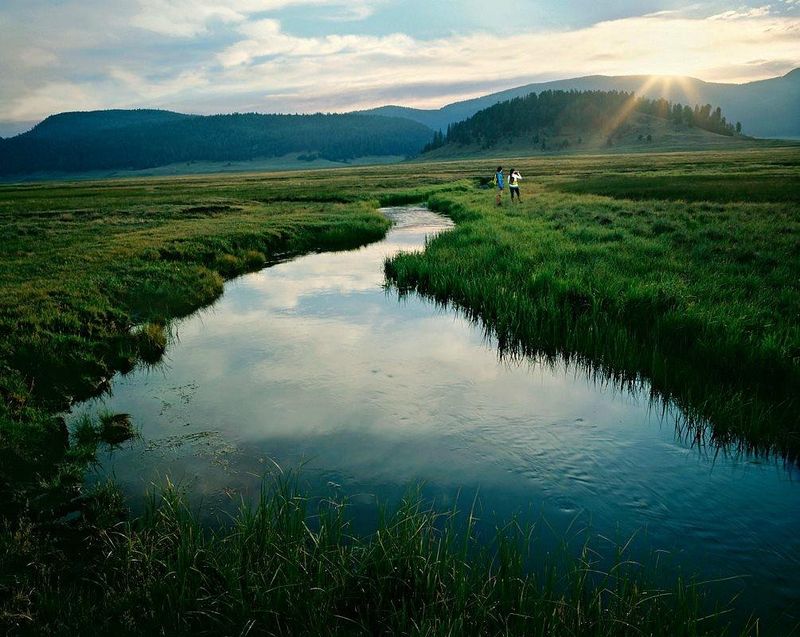
Once a supervolcano, Valles Caldera now offers lush meadows, wildlife, and scenic beauty. Located in the Jemez Mountains, the caldera provides a stark contrast to the arid landscapes typical of New Mexico.
Visitors can explore the preserve’s diverse ecosystems, spotting elk, deer, and other wildlife. Hiking, fishing, and photography are popular activities, with the caldera’s vast expanse offering tranquility and solitude.
“Did you know? The caldera was formed over a million years ago and is one of the best examples of a resurgent caldera in the world.”
Ghost Ranch
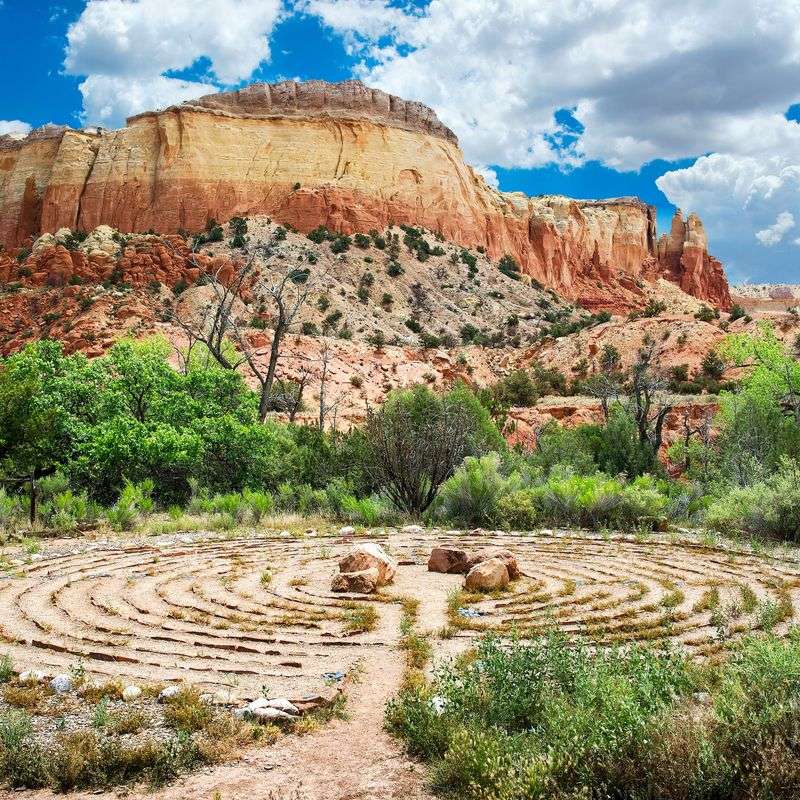
Known for its stunning landscapes, Ghost Ranch was once home to artist Georgia O’Keeffe. This retreat offers vibrant red and yellow cliffs, expansive desert views, and a rich artistic history.
Visitors can explore hiking trails, visit the museums, or participate in art workshops inspired by the scenery. The ranch’s breathtaking vistas continue to inspire artists and nature enthusiasts alike.
“Fun fact: Georgia O’Keeffe referred to Ghost Ranch as her “faraway” and painted many of her iconic works here.”
Sandia Peak Tramway
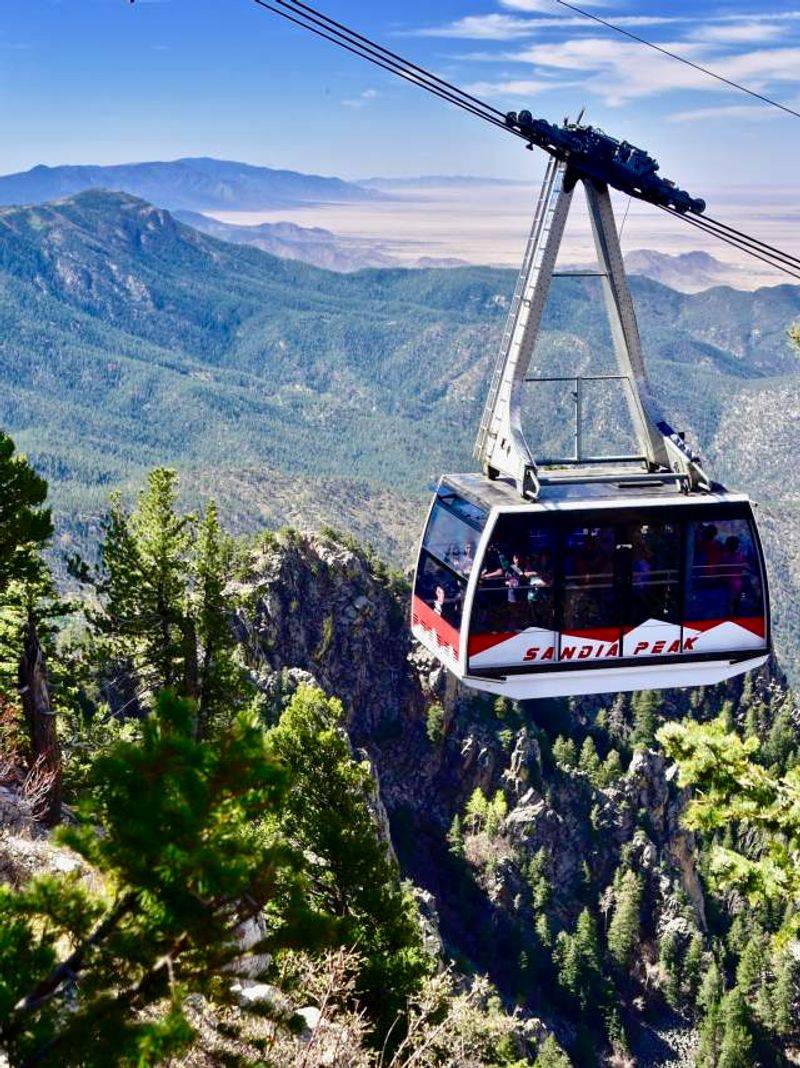
Soar above Albuquerque on the Sandia Peak Tramway, the longest aerial tram in the United States. The journey to the mountain’s summit offers stunning views of the city and surrounding desert.
At the top, visitors can enjoy hiking, dining, and skiing during winter months. The panoramic vistas from Sandia Peak provide a breathtaking perspective of New Mexico’s diverse landscapes.
“Did you know? The tramway stretches over 2.7 miles, taking passengers to an elevation of 10,378 feet above sea level.”
Trinity Site
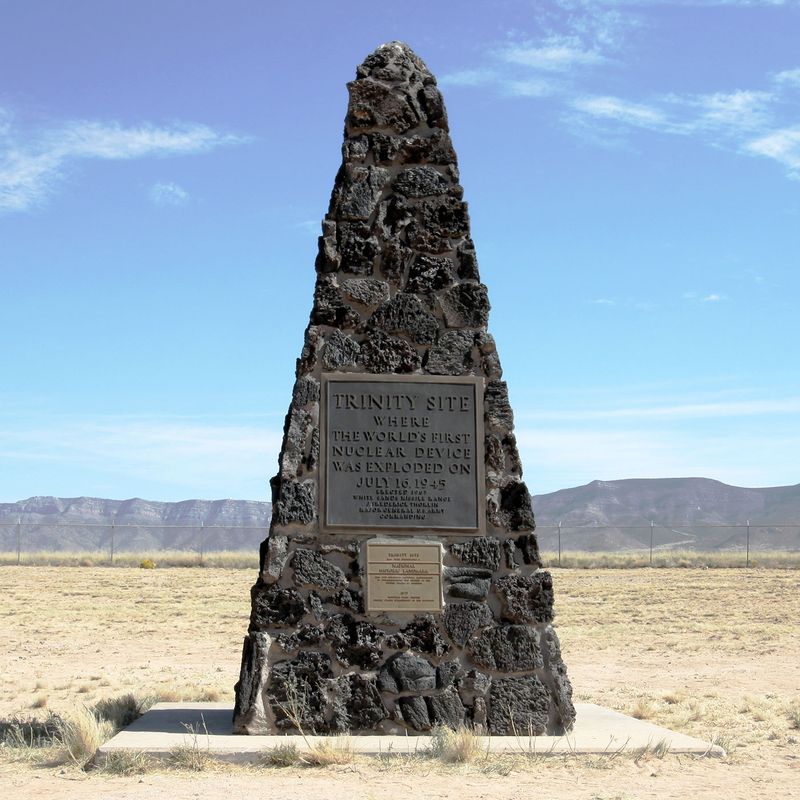
The Trinity Site marks the location of the world’s first atomic bomb test, conducted on July 16, 1945. This historical landmark offers a glimpse into a pivotal moment in history.
Visitors can explore the site and learn about the Manhattan Project’s impact on science and global politics. The site’s desolate landscape serves as a sobering reminder of the power and consequences of nuclear technology.
“Fun fact: The test’s success was instrumental in ending World War II, but it also ushered in the nuclear age.”
Petroglyph National Monument
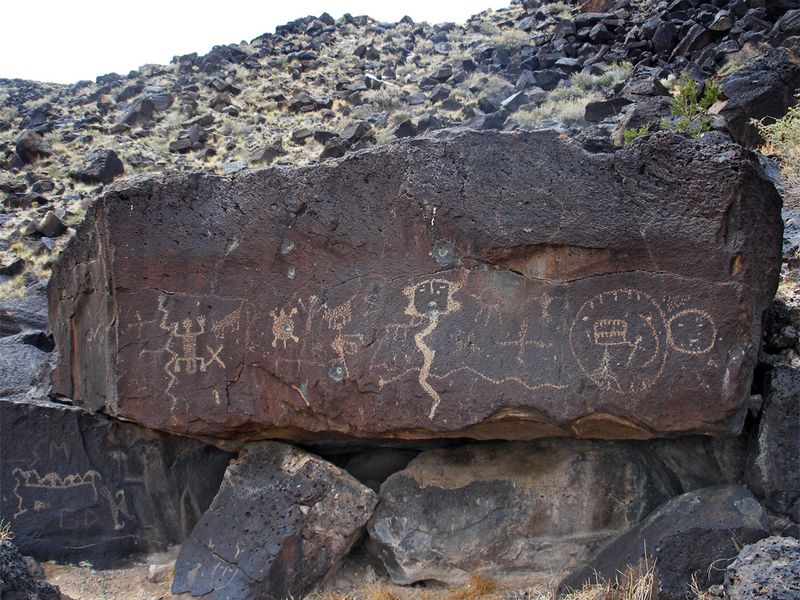
Discover thousands of ancient rock carvings at Petroglyph National Monument. These images, etched by Native Americans and early Spanish settlers, tell stories of culture and history.
The monument’s trails lead visitors through a landscape of volcanic rock and desert flora. Exploring these petroglyphs offers insight into the lives and beliefs of the region’s early inhabitants.
“Did you know? Over 20,000 petroglyphs can be found here, making it one of the largest petroglyph sites in North America.”
Very Large Array
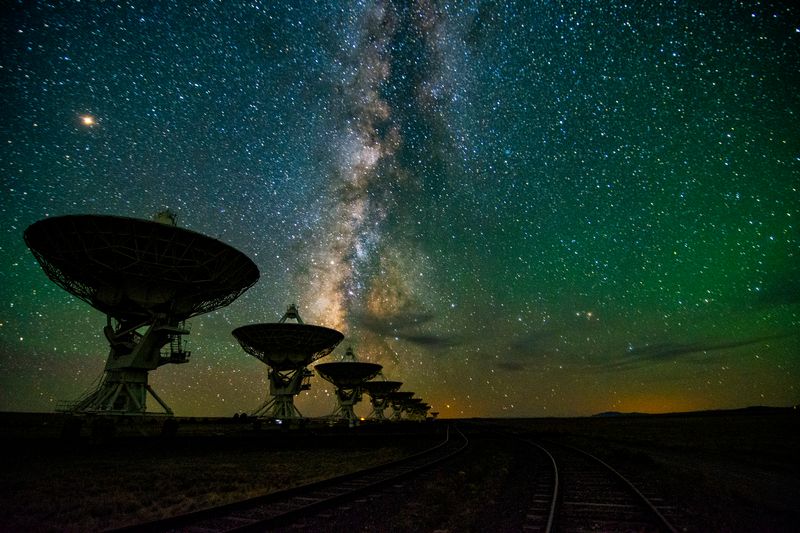
Located on the Plains of San Agustin, the Very Large Array (VLA) is a collection of 27 massive radio telescopes. These scientific instruments are used to observe astronomical phenomena across the universe.
Visitors can take guided tours to learn about the VLA’s role in space exploration and its contribution to our understanding of the cosmos. The sight of the giant dishes against the vast New Mexican sky is unforgettable.
“Fun fact: The VLA was featured in the movie “Contact,” symbolizing humanity’s quest for knowledge beyond our planet.”
Bosque del Apache National Wildlife Refuge
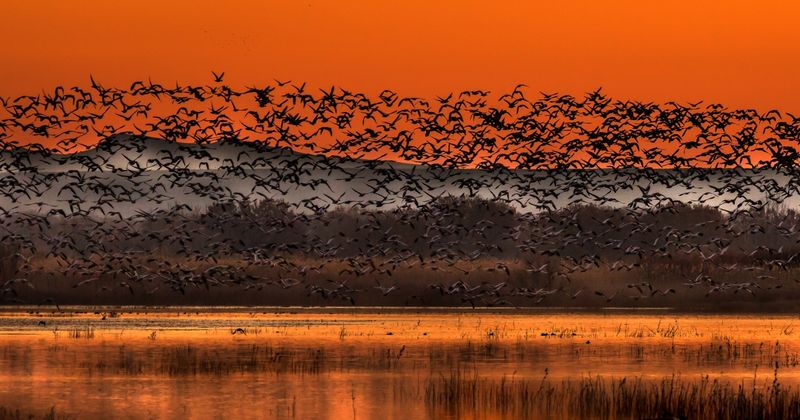
A haven for birdwatchers, Bosque del Apache National Wildlife Refuge hosts thousands of migrating cranes and geese each year. The refuge’s wetlands and riparian habitats support diverse wildlife.
Visitors can enjoy scenic drives, photography, and birdwatching, especially during the annual Festival of the Cranes. The sight of thousands of birds taking flight at sunrise is a breathtaking experience.
“Did you know? The refuge is a critical stopover for migratory birds traveling along the Rio Grande, providing essential habitat for their journey.”
Blue Hole of Santa Rosa
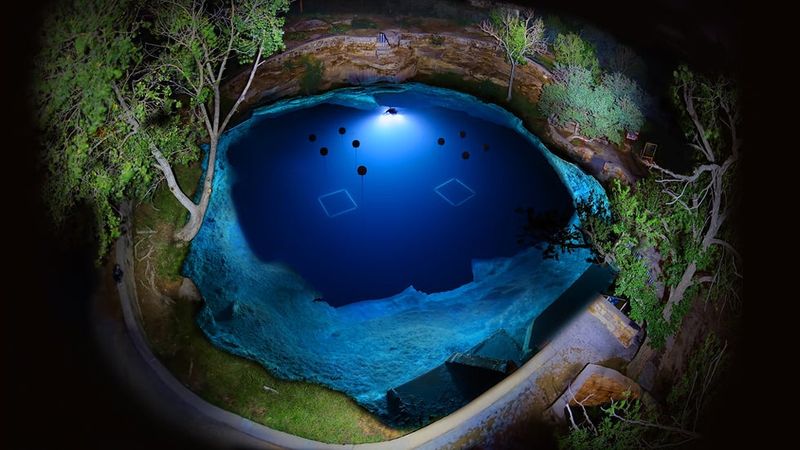
The Blue Hole of Santa Rosa, a mesmerizing natural artesian spring, offers an unexpected oasis in the heart of the arid New Mexican landscape. Known for its crystal-clear waters, this circular pool plunges to a depth of 80 feet, inviting divers from all over the world.
Imagine floating in this cerulean gem, where the desert heat fades away, replaced by the refreshing embrace of its cool waters. The Blue Hole’s unique geological features create an environment teeming with life, making it a haven for aquatic enthusiasts.
Did you know? This surreal destination was once a fish hatchery in the early 20th century, adding a touch of historical intrigue to its allure.

